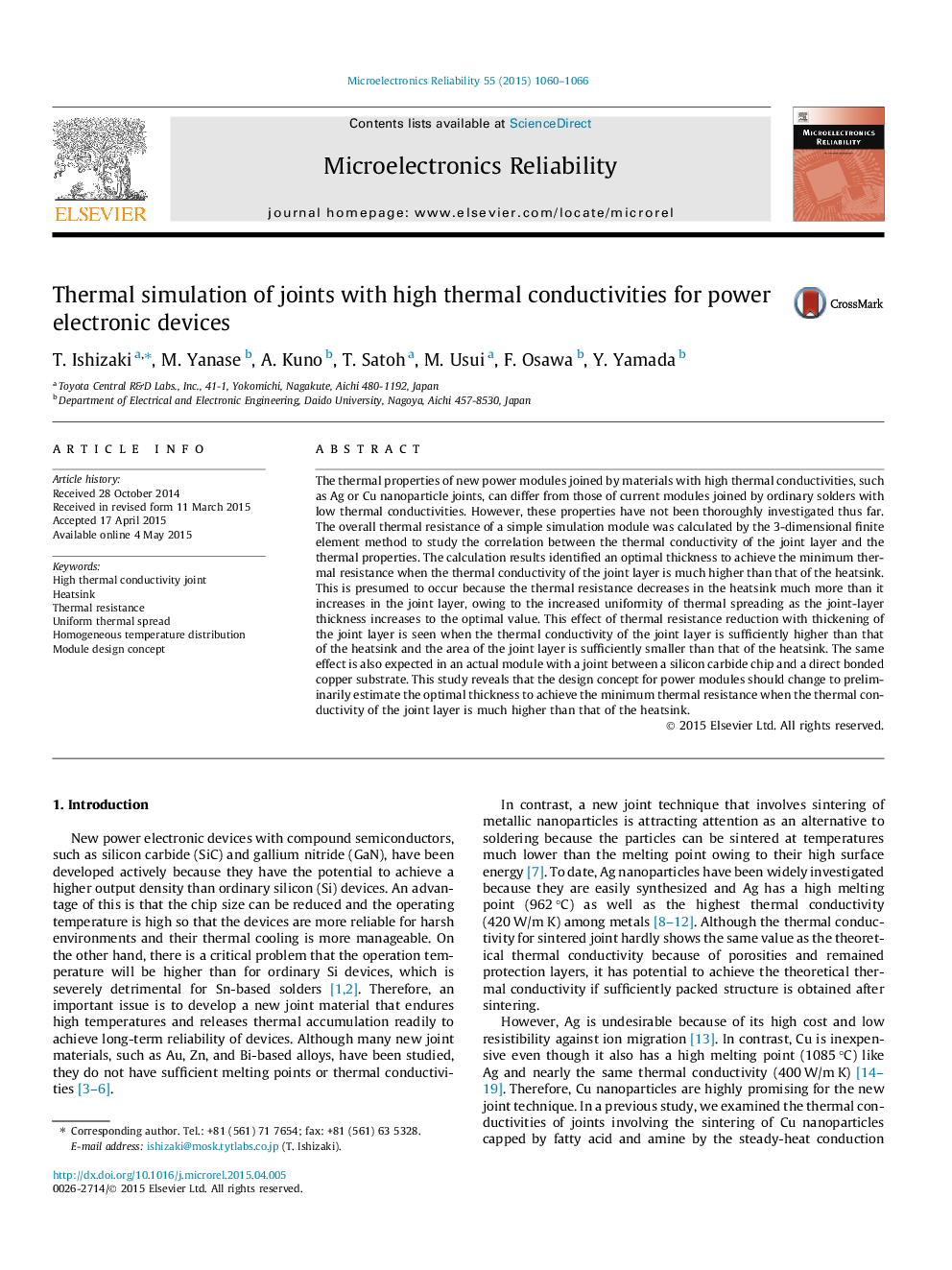| Article ID | Journal | Published Year | Pages | File Type |
|---|---|---|---|---|
| 544738 | Microelectronics Reliability | 2015 | 7 Pages |
•Thermal properties are studied for high thermal conductivity joints.•Thermal resistance is minimal at optimal thickness by uniform thermal spread.•Effect of thermal conductivity on thermal resistance of joints is studied.•New design concept is suggested to reduce thermal resistance of power module.
The thermal properties of new power modules joined by materials with high thermal conductivities, such as Ag or Cu nanoparticle joints, can differ from those of current modules joined by ordinary solders with low thermal conductivities. However, these properties have not been thoroughly investigated thus far. The overall thermal resistance of a simple simulation module was calculated by the 3-dimensional finite element method to study the correlation between the thermal conductivity of the joint layer and the thermal properties. The calculation results identified an optimal thickness to achieve the minimum thermal resistance when the thermal conductivity of the joint layer is much higher than that of the heatsink. This is presumed to occur because the thermal resistance decreases in the heatsink much more than it increases in the joint layer, owing to the increased uniformity of thermal spreading as the joint-layer thickness increases to the optimal value. This effect of thermal resistance reduction with thickening of the joint layer is seen when the thermal conductivity of the joint layer is sufficiently higher than that of the heatsink and the area of the joint layer is sufficiently smaller than that of the heatsink. The same effect is also expected in an actual module with a joint between a silicon carbide chip and a direct bonded copper substrate. This study reveals that the design concept for power modules should change to preliminarily estimate the optimal thickness to achieve the minimum thermal resistance when the thermal conductivity of the joint layer is much higher than that of the heatsink.
